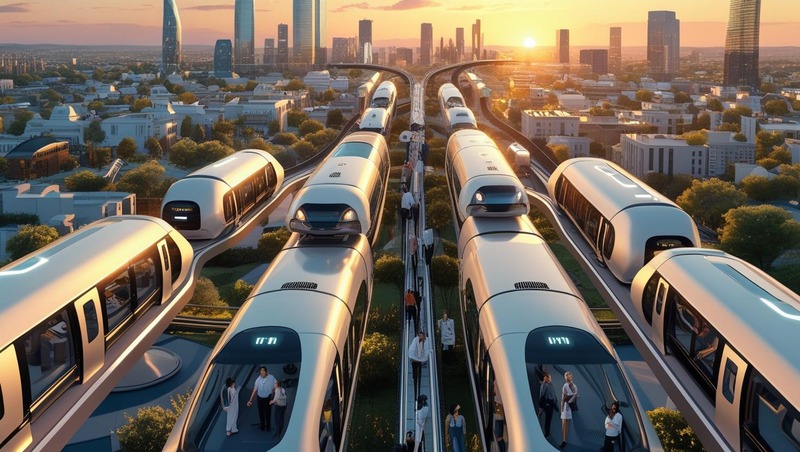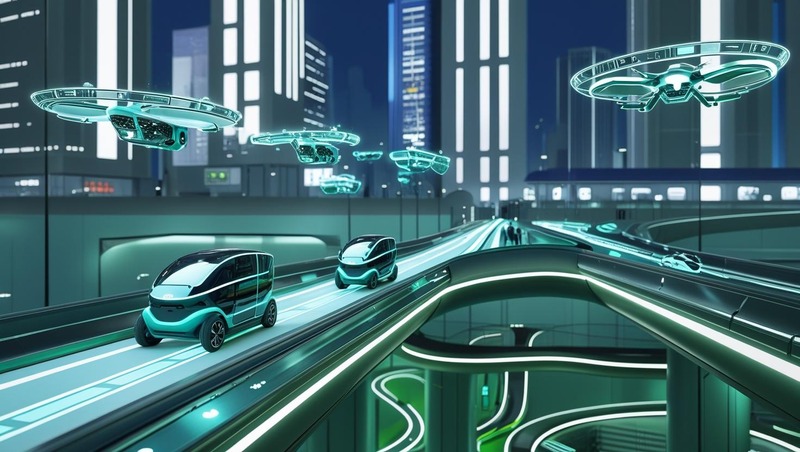Smart Transportation Market Overview
Technologies play a major role in electronic toll collection systems, and these systems can have problems due to hardware failure, software errors, or times when the systems cannot communicate. Every performance fault in a system component might lead to collection disruptions, making it difficult for users and costly for operators. For this reason, drivers may have to pay in different ways at toll booths, or there could be delays until electronic payments are available once more. In addition, when toll booths face technical issues, the traffic jams get even worse, where lots of vehicles congregate, as toll processing problems often cause delays and crowding.
https://www.marketsandmarkets.com/pdfdownloadNew.asp?id=224492059

Additionally, risks related to cybersecurity make the situation even more serious for businesses. Hackers could access ETC-based systems and take data, causing problems for the software’s functioning. A recent example is the cyberattack on the Illinois Tollway system in 2023, where hackers stopped operations, proving that too much digitization can leave things prone to interruptions. Such troubles reduce people’s trust in software since they might see their data used without consent or pay bills that are not accurate.
Market Dynamics
Drivers of Growth
Several factors contribute to the robust growth of the smart transportation market:
-
Urbanization and Infrastructure Development: Rapid urbanization necessitates the development of intelligent transportation systems to manage increasing traffic volumes and ensure efficient mobility.
-
Technological Advancements: The integration of IoT, AI, and big data analytics enables real-time traffic monitoring, predictive maintenance, and efficient route planning, enhancing the overall transportation experience.
-
Government Initiatives: Governments worldwide are investing in smart city projects and implementing policies that promote the adoption of smart transportation solutions to reduce emissions and improve public safety.
-
Environmental Concerns: The need to reduce greenhouse gas emissions and combat climate change drives the adoption of sustainable transportation solutions, including electric vehicles and intelligent traffic management systems.
Challenges
Despite the promising growth, the market faces challenges such as high implementation costs, data privacy concerns, and the need for standardization across different systems and technologies. Addressing these issues is crucial for the widespread adoption of smart transportation solutions.
Regional Insights
North America
North America holds a significant share of the smart transportation market, driven by substantial investments in infrastructure and early adoption of advanced technologies. The region’s focus on reducing traffic congestion and enhancing public safety contributes to market growth.
Europe
Europe is a prominent market, with countries investing heavily in smart transportation infrastructure. Initiatives like the Connecting Europe Facility (CEF) support the development of efficient, sustainable, and interconnected transportation networks across the continent.
Asia-Pacific
The Asia-Pacific region is expected to witness the fastest growth, attributed to rapid urbanization, increasing vehicle ownership, and government initiatives promoting smart city development. Countries like China and India are investing in modernizing their transportation systems to accommodate growing urban populations.
Latin America and Middle East & Africa
These regions are gradually adopting smart transportation solutions, focusing on improving public transportation systems and reducing traffic congestion. Investments in infrastructure and technology are expected to drive market growth in the coming years.
Market Segmentation
By Solution
-
Traffic Management Systems: These systems utilize real-time data to optimize traffic flow, reduce congestion, and enhance road safety.
-
Smart Ticketing Systems: Digital ticketing solutions streamline fare collection and improve the efficiency of public transportation services.
-
Parking Management Systems: Intelligent parking solutions help drivers find available parking spaces, reducing traffic congestion and emissions.
-
Integrated Supervision Systems: These systems provide centralized control and monitoring of various transportation modes, enhancing coordination and efficiency.
By Service
-
Cloud Services: Cloud-based platforms offer scalable and flexible solutions for data storage, analytics, and system management.
-
Business Services: Consulting and implementation services assist in the deployment and optimization of smart transportation systems.
-
Professional Services: These include maintenance, support, and training services to ensure the effective operation of smart transportation solutions.

Competitive Landscape
The smart transportation market is characterized by the presence of several key players focusing on innovation and strategic partnerships to enhance their market position. Notable companies include:
-
Siemens AG: Offers a range of intelligent transportation solutions, including traffic management and rail automation systems.
-
IBM Corporation: Provides data analytics and AI-driven solutions for transportation optimization.
-
Cisco Systems, Inc.: Specializes in networking and communication technologies that support connected transportation systems.
-
Alstom SA: Focuses on sustainable mobility solutions, including smart rail systems and signaling technologies.
-
Thales Group: Offers integrated transportation systems and security solutions for urban mobility.
Future Outlook
The smart transportation market is set to experience sustained growth through 2030, driven by technological advancements and the increasing need for efficient and sustainable transportation solutions. The integration of emerging technologies such as autonomous vehicles, 5G connectivity, and advanced analytics will further transform the transportation landscape. As cities continue to evolve into smart urban centers, the demand for intelligent transportation systems will become increasingly critical to ensure mobility, safety, and environmental sustainability.
